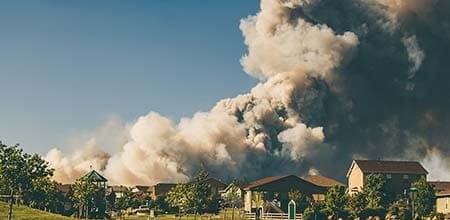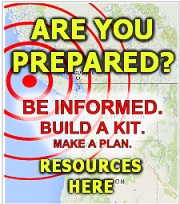|
By Garret Hartung |

|
The Pacific Northwest had a rather mild start to the summer of 2024. The month of June ended up a whopping 2.7°F below average with precipitation also coming in slightly below average. This is a stark contrast from the last three June’s which all featured above average temperatures. The slightly cooler temperatures we saw in June were in part due to persistent upper level troughing in the Gulf of Alaska, an area of cooler air aloft that maintains onshore flow and often steers frontal systems through the Pacific Northwest. This is a pattern we often see in the wintertime, hence why this June was dubbed “Junuary” by many local meteorologists.
A common adage around the Pacific Northwest is that summer does not start until July 5th. According to that, summer was right on time this year as a potent upper-level ridge developed across the Western US around July 4th, allowing for many locations to see their first 100°F readings of the year. This early July heatwave did not match the magnitude of the great June heat dome of 2021 as temperatures peaked at only 104°F at PDX. However, this heatwave was historic in terms of duration with five consecutive days of temperatures reaching or exceeding 99°F, which ties the record set back in August of 1981 and July of 1941.
Warm and dry conditions have continued through the first half of July with high temperatures so far averaging 11°F above the average of 80°F for the month of July. The persistent hot and dry conditions have quickly dried out the vegetation across the state, allowing for wildfire season to come roaring back to life, especially east of the Cascades. So far this year over 300,000 acres have burned in Oregon, already surpassing the roughly 260,000 acres that burned in all of 2023. Most of the fires so far have been human caused. On July 16th/17th, a system moving up the Oregon coast triggered many thunderstorms across the central portions of the state, likely starting dozens of new fires. So unfortunately, the acreage burned will continue to increase as we head deeper into the driest period of the year.
There will likely be a period or two where smoke makes its way west of the Cascades during the later part of the summer, especially if we get an offshore/easterly flow event. Smoke is a regular and natural occurrence for the Pacific Northwest, but it can be hazardous at times, especially for more vulnerable population groups. Having new filters in HVAC systems and running air purifiers can help to limit smoke particles inside of the home. N-95 mask can also be helpful when venturing outside should air quality becomes hazardous from smoke. It is also important to be extremely careful in our wildland areas for the rest of the summer as even the smallest spark can start large and dangerous fires.
















